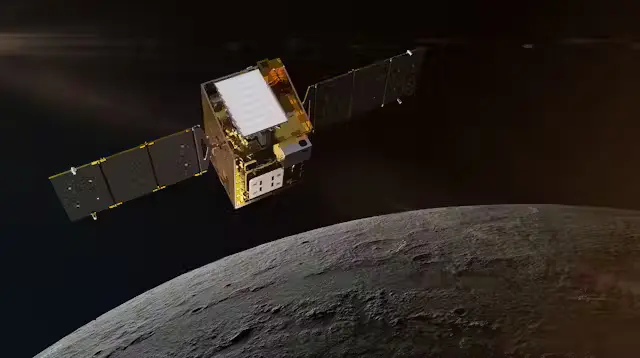Have you ever looked up at the stars and wondered what lies beyond our blue sky?As we move forward into the future, that curiosity is leading to real action. Across the globe, agencies like NASA, ESA, ISRO, and private companies like SpaceX are launching new space missions. These are not just science they are real mission with shaping new future of human in space.
What is Space Exploration?
In process of Space exploration they are investigating outer space using astronomy, science, and advanced technology. It involves sending humans and machines beyond Earth’s atmosphere to find what’s out there—planets, stars, galaxies, and even the possibility of life.
But it’s more than just rockets and astronauts. Space exploration helps us:
- Understand Earth’s place in the universe
- Advance technology for everyday use (like GPS and satellite communication)
- It Prepare us for future space travel, including to Moon, Mars and other planets
- Monitor Earth and study the climate and from orbit

1. NASA’s Artemis III: Back to the Moon
Why It Was Started
The Artemis program was launched to return humans to the Moon for the first time since 1972. Unlike past lunar missions, Artemis aims to build a long-term human presence there. NASA wants to learn how to live and work on another world—which is crucial before going to Mars.
2025 Highlights
Artemis III, scheduled for 2025, will land astronauts on the Moon’s south pole. One of them is expected to be a woman—the first ever to walk on the Moon. They’ll explore the icy craters and gather samples.
Future Scope
There goal is to build sustainable lunar base by the 2030s. This mission space will serve as a tryout for future human missions to Mars, with lessons in survival, technology, and teamwork.
2. SpaceX Starship Missions: Preparing for Mars
Why It Was Started
SpaceX’s Starship was developed to be a fully reusable spacecraft capable of carrying both cargo and crew to destinations like the Moon and Mars. The reason behind this step is to reduce launch costs and make space travel more affordable.
2025 Plans
In 2025, SpaceX plans several test flights of Starship, including potential low earth orbit missions and Moon test flights. This is a strong step before attempting human landings on the lunar surface or a Mars mission.
Future Scope
Starship could be the backbone of a future Mars colony. This mission space could one day carry the first humans to the Red Planet & Moon. Elon Musk’s vision is bold: make humanity a multi-planetary species.
3. ESA’s JUICE Mission: Exploring Jupiter’s Moons
Why It Was Started
The Jupiter Icy Moons Explorer (JUICE) is the European Space Agency’s flagship mission to study the biggest planet in our solar system and its three most interesting moons: Europa, Ganymede, and Callisto. These moons are believed to have underground oceans—increasing the possibility of alien life.
2025 Mission Goals
JUICE is scheduled to arrive at Jupiter in 2031, but it will launch and begin orbital maneuvers in 2025. The mission will use flybys and orbit insertion to collect data on the moons’ ice layers, geology, and magnetic fields.
Future Scope
If life exists beyond Earth, these moons are top candidates. The mission space may help scientists decide where future robotic landers—or even human missions—should go.
4. China’s Mars Sample Return Mission
Why It Was Started
After the success of its 2021 Tianwen-1 mission, China announced an ambitious plan: bring actual Martian soil back to Earth. This has never been done before and would be a historic scientific achievement.
2025 Mission Scope
The mission includes two spacecraft—one to collect samples, and one to return them to Earth. If all goes well, this mission space will deliver Martian rock and dust by the early 2030s.
Future Potential
Testing on Earth provides scientists with far more capabilities than remote rovers ever could. These samples may include evidence of ancient life or provide insight into Mars’ evolution. This will be necessary if people one day decide to stay there.

5. India’s Gaganyaan: First Indian Crewed Mission
Why It Was Started
India’s Gaganyaan mission represents the first human spaceflight.. After launching successful robotic missions to the Moon and Mars, ISRO (Indian Space Research Organisation) wants to send Indian astronauts into space on its own rocket.
2025 Launch
It will be preceded by three test launches, two uncrewed and one with a robot, this is the latest extension of the launch date, in this most anticipated of ISRO’s missions.
Future Vision
This mission space lays the foundation for India’s ambitions in space tourism, lunar landings, and maybe even a Mars program. It also builds local expertise in human spaceflight, which is a major leap for any country.
Why These Missions Matter
All of these 2025 missions, although different in goals and locations, share a common thread: they push humans forward. They ask not just what is space exploration, but why it’s worth the risk, effort, and money.
Some focus on deep space, while others target the Moon or low Earth orbit. Together, they:
- Strengthen international cooperation
- Prepare for planetary defense
- Support science and innovation
- Offer hope and inspiration to future generations
Conclusion
2025 isn’t just another year in the calendar—it’s a turning point in space history. From America’s return to the Moon, to China and India rising as new leaders, and private companies like SpaceX changing how we think about space travel, So the next time you hear the phrase mission space, remember: it’s not just about astronauts and rockets. It’s about learning more, dreaming bigger, and bringing humanity one step closer to the stars.

